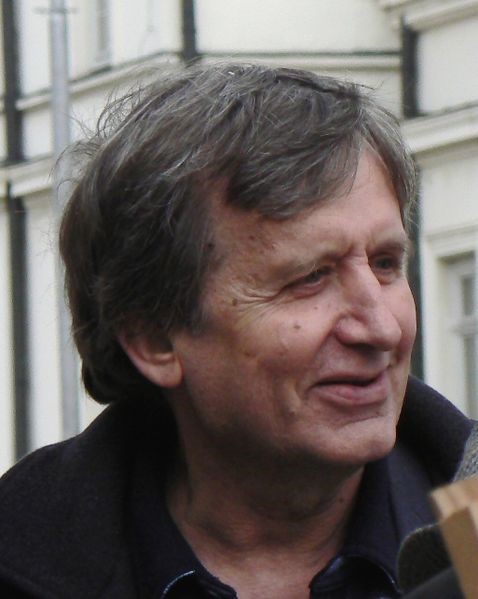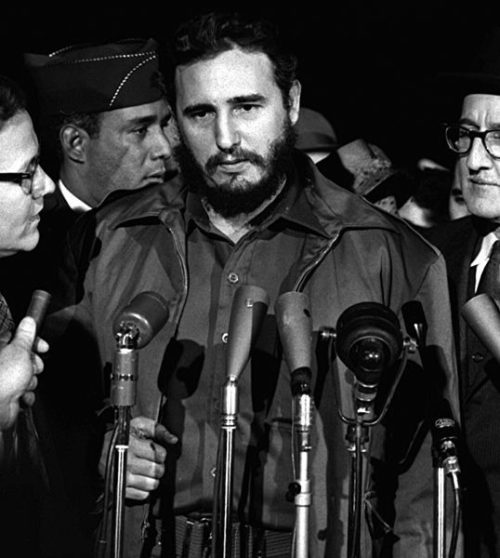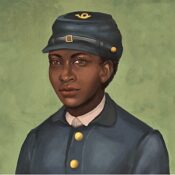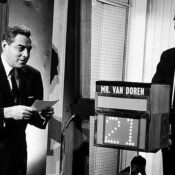Forty years ago this week, Bulgarian writer Georgi Markov succumbed to poison shot from an umbrella, the result of a diabolically inventive assassination plot. We look at five of the most diabolical, relentless, and shrewd assassination plots ever.
1. Georgi Markov: Poisoned via Umbrella

Just as Batman’s the Penguin uses an umbrella as his primary weapon, so too did the assassin that killed Markov. Markov had defected to the west in 1968 and had continued to rail against the regime in his homeland through his work, both in writing and for the BBC. While crossing the Waterloo Bridge in London on September 7, 1968, Markov felt a pain in his leg. He saw a man with umbrella get into a car and speed away.
Markov fell ill and died four days later. The pain in his leg turned out to be a pinhead-sized pellet containing ricin, an extremely powerful toxin. Investigators later believed that Markov was killed in retaliation for anti-communist work; the perpetrator was believed to be an associate of the Bulgarian Secret Service. Later, Russian defectors from inside the KGB would disclose that the notorious agency of the Soviet Union helped carry out the plan. The entire story was covered in a 2006 documentary titled The Umbrella Assassin.
2. Rasputin Took a Lot of Work

Grigori Yefimovich Rasputin remains one of the most notorious figures in the history of the world. The Russian mystic has been an extremely popular villain in nearly every form of media, including animated films (Anastasia), comics (the Hellboy series), novels, and theatre; he’s been played in film by the likes of Alan Rickman, Gérard Depardieu, Lionel Barrymore, and Christopher Lee. In real life, the monk forged a bond with Tsar Nicholas II and his wife Alexandra that led to the undoing of an empire.
Rasputin came in the orbit of the Tsar in 1906, serving the family as a healer and adviser while helping to care for Alexei, the Tsar’s son. Alexi suffered from hemophilia, and both the Tsar and Alexandra believed Rasputin to be a great help. As his influence at court grew, other nobles took exception, particularly as Russia’s fortunes suffered in World War I.
The “mad monk” had already narrowly escaped death once when the follower of a rival priest stabbed him in 1914. When the nobles made their move in 1916, Rasputin’s resistance to the Grim Reaper proved to be more than a one-time deal. On December 30, 1916, at the home of Prince Felix Yusupov, the plot unfolded. The Prince and his co-conspirators gave Rasputin tea and cakes laced with cyanide, but this apparently had no effect. They then served him poisoned wine. When that didn’t seem to do the trick, they shot him in the chest. Amazingly, the night wasn’t over.
Rasputin was driven to his home, but allegedly got up and attacked his assailants. They shot him two more times, including once in the forehead, and dumped him into the Malaya Nevka River, where he finally died. A few weeks later, the Tsar was ousted by the February Revolution of 1917; he and the rest of the family would themselves be assassinated in 1918.
3. Alexander Litvinenko Accuses Putin, Then Dies a Month Later

Litvinenko was born in the Soviet Union and worked for the FSB, the successor to the KGB. A counter-terror specialist, Litvinenko joined other agents in 1998 to publicly declare their suspicions that some of their superiors were involved in the murder of Russian businessman Boris Berezovsky. Litvinenko found the wheels of justice turning against him when he was arrested for allegedly exceeding the boundaries of his position. Tried, acquitted, and re-arrested, Litvinenko fled with his family. The United Kingdom granted them asylum, and Litvinenko became a writer and consultant for British intelligence.
Litvinenko leveled serious accusations against Vladimir Putin, including that he ordered the murder of journalist Anna Politkovskaya in October of 2006. One month later, Litvinenko took ill and went into the hospital. It was determined that he’d been poisoned with polonium-210, a radioactive isotope known for its extreme toxicity — it’s 250 billion times more toxic than hydrogen cyanide. Litvinenko had met with two former KGB agents on the day he fell ill, and traces of polonium-210 were later found in the house and car used by one of the men in Germany. Litvinenko died on November 23, 2006; his widow was convinced that someone in Putin’s orbit ordered the murder.
4. Operation Wrath of God Goes on for Years
Jim McKay’s famous live coverage of the events at the Munich Olympic Games in 1972.
The world watched in horror as the Palestinian Liberation Organization-affiliated terror group Black September perpetrated the Munich Massacre during the 1972 Olympic Games. Eleven Israeli athletes and a West German policeman were murdered after being taken hostage. Of the eight members of Black September present, five were killed in the botched raid by German authorities; three were later captured, but released in a hostage exchange. Mossad, Israel’s national intelligence agency, wasn’t quite so willing to let them go.
Israel’s immediate response came two days after the massacre when they bombed ten PLO bases spread between Syria and Lebanon. A group inside the Israeli government, Committee X, was formed by Prime Minister Golda Meir to explore further response. The group eventually came to a consensus that the three Black September survivors and anyone else associated with the planning of Munich needed to die, so that any other organization should thereafter always be afraid of what an Israeli response might be to terrorist attacks. With the help of allies in the European intelligence community and their own agents inside the PLO, the Committee composed a list of targets, and the broader mission was named Operation Wrath of God.

Over the next several years, operatives connected to the Munich Massacre were assassinated in a variety of shootings and bombings. One operative was killed when he was shoved in front of a bus. Possibly the most well-known of the explosive assassinations, depicted in Steven Spielberg’s film Munich, was the killing of Mahmoud Hamshari in December, 1972. Agents installed a bomb attached to the phone in Hamshari’s Paris apartment; when they called later and confirmed it was him on the line, they detonated the device. He succumbed to his injuries a few weeks later.
It didn’t end there. In fact, things escalated. A botched assassination attempt in Norway in July, 1973 led to several Mossad agents being arrested. A large, sophisticated raid in 1973 involving other tactical teams called Operation Spring of Youth landed in Lebanon to attack PLO and Popular Front for the Liberation of Palestine locations, resulting in dozens dead and the destruction of a six-story PFLP building. A counter-campaign of assassinations also took the lives of several Mossad operatives. Mossad even discovered and foiled an assassination attempt on Meir herself in Italy in 1973. Related killings and retaliations continued into the early ’90s.
5. Fidel Castro Evaded More Than 600 Assassination Attempts
Fidel Castro, the man who ran Cuba from 1959 to 2008, was a long-time target of the United States, particularly after he precipitated the Cuban Missile Crisis. According to Fabián Escalante, the former director of Cuban Intelligence, there were more than 600 unsuccessful plans or attempts on behalf of the U.S. to kill Castro. In fact, in a New York Daily News piece, Escalante specified how many plots there were per president from Eisenhower to Clinton; Reagan had the most, with 197, while George H.W. Bush had the least, with 16.

Among the many clever plots that were enacted but failed were a poisoned milkshake, a ballpoint pen loaded with poison, an explosive cigar, and an explosive conch shell placed underwater that would have detonated when Castro, an avid diver, swam close to it. In terms of discarded plots, possibly the most ingenious also related to diving, which was a suggestion to infect Castro’s dive suit with a fatal skin disease. There were also garden variety plots to shoot or blow up Castro. The CIA went so far at one juncture to make an alliance with the Chicago Outfit and other mobsters in an attempt to slip Castro poison pills. That didn’t work, either.
Castro retired in 2008, and his brother, Raúl, became leader. Castro would eventually die in November of 2016 of undisclosed causes at age 90.
Become a Saturday Evening Post member and enjoy unlimited access. Subscribe now




Comments
Thanks for reading, but not for my comments?! You’re welcome anyway, of course. Anyhow, I know Markov was shot with the poison on September 7th and didn’t finally die until the 11th: in 1978, NOT ’68 per the typo; just correcting the year in my first comments Troy, that’s it.
These are all very frightening, sinister and seemingly far fetched in addition to being diabolical (especially with Castro and Rasputin) except they’re not. In the case of the latter, I’m beyond shocked. I had to re-read it to believe it; he was THAT difficult to kill!!!! I think in regard to Georgi Markov, you meant September 7. 1978. This one too is diabolical, of course, yet so scary in its simplicity. Thanks for the details on the ’72 Munich Olympic Massacre, including the links. The killing of Mahmoud Hamshari that December is chilling. I’d forgotten about that attempt (in Italy) on Golda Meir’s life and how long the related retaliations and killings would continue. Thanks also for the link of Jim McKay. He’ll always be THE gold standard of American sports TV journalism; especially for the Olympics. He had the perfect temperament you no longer see, in addition to his knowledge, sincerity, kindness and CLASS!